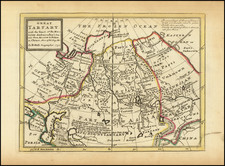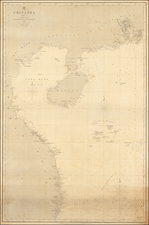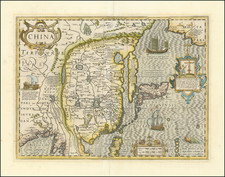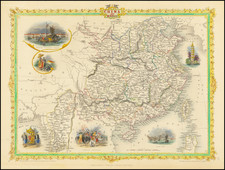Ferdinand Verbiest (1623-1688) was a Belgian missionary and astronomer. He entered the Society of Jesus in 1641 and studied theology in Seville. In 1658, he traveled with Father Martin Martini on a Mission to China. Verbiest first worked in Macao in 1659 and was later called to Peking in 1660 to assist and later replace Father Adam Schall as chief astronomer of the mission.
Verbiest was among those imprisoned in 1664 during the persecution of the Missionaries. He became the primary spokesman for the missionaries in their pleas for tolerance. In 1668, the Chinese Emperor K'ang-hi commanded a public test, which allowed Verbiest to demonstrate the merits of European astronomy versus Chinese astronomy. Father Verbiest and a Chinese counterpart were asked to determine in advance the length of the shadow thrown by a gnomon of a given height at noon of a certain day then the absolute and relative positions of the sun and the planets on a given date, and finally the moment of a lunar eclipse. Verbiest's calculations prevailed, ending the imprisonment of the Jesuits and launching Verbiest into a position of respect with the Emperor.
From that point, Emperor K'ang-hi's benevolence towards Father Verbiest and Christianity increased steadily. The Emperor requested that Verbiest construct instruments like those of Europe. In May, 1674, Verbiest presented the Emperor with six instruments: a quadrant, six feet in radius; an azimuth compass, six feet in diameter; a sextant, eight feet in radius; a celestial globe, six feet in diameter; and two armillary spheres, zodiacal and equinoctial, each six feet in diameter. They six are still housed in the imperial palace. In 1677, Father Verbiest was appointed vice provincial, making him the leader of the Missionaries in China. He died in Peking in 1688. Verbiest's account is included in his A stronomia europaea svb imperatore tartaro sinico Cám Hý appellato ex umbra in lucem revocata à R.P. Ferdinando Verbiest, published in 1687.
In cartographic circles, Verbiest is best known for his 8 sheet map of the World, published in Peking in 1674. The map offered here was engraved by Melchior Haffner, who is also credited with engraving at least one illustration for Verbiest's Astronomia europaea . . . This seems to be the only map engraved by Haffner, who also engraved the plates for several noteworthy medical and scientific works. We have also located a work allegedly authored by Haffner (although we suspect he was probably the illustrator responsible for the 52 plates included therein) entitled Vita S. Francisci Xaverij Soc. Iesv : Indiae et Iaponiae apostoli iconibus illustrata., a work which resides in the Max Besson Library Japonica Collection of the Univerity of Birmingham's Philological Musuem. A copy of the map resides in the Shannon Boyd-Bailey McCune collection of East Asian Library at the University of Southern California. Haffner's father (same name) was also an engraver, who worked in Ulm in the first part of the 17th Century. Among his work is the famous engraving Matthias Bernegger, Kepler's Friend (Kepler Research Institute, Weil der Stadt, Germany).









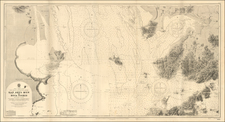
![[ China ] Carte vom Reich China nach der neuesten grossen Carte des Herrn. d'Anville und Hase entworfen 1762](https://storage.googleapis.com/raremaps/img/small/103353.jpg)
